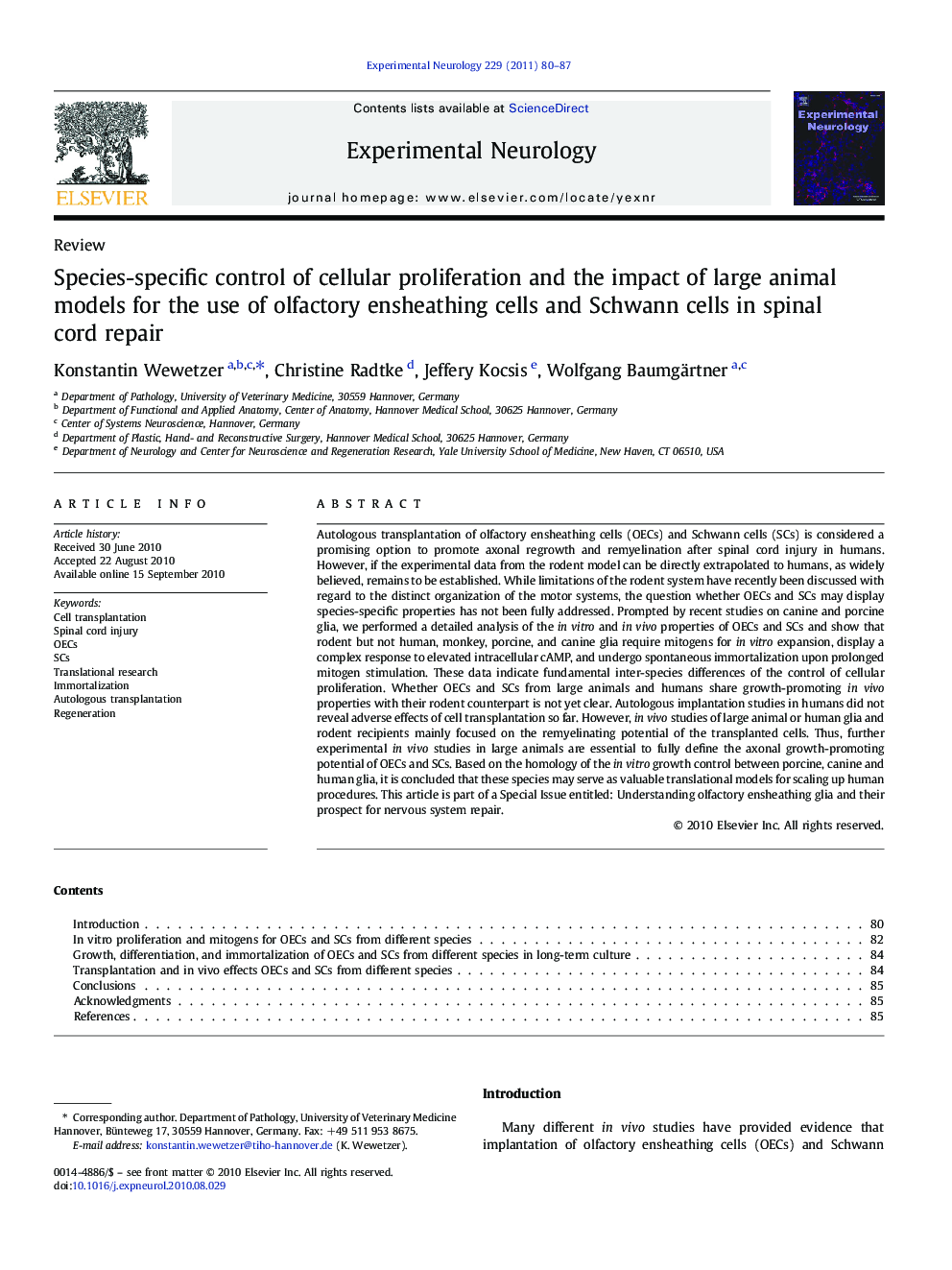| کد مقاله | کد نشریه | سال انتشار | مقاله انگلیسی | نسخه تمام متن |
|---|---|---|---|---|
| 6019187 | 1186540 | 2011 | 8 صفحه PDF | دانلود رایگان |

Autologous transplantation of olfactory ensheathing cells (OECs) and Schwann cells (SCs) is considered a promising option to promote axonal regrowth and remyelination after spinal cord injury in humans. However, if the experimental data from the rodent model can be directly extrapolated to humans, as widely believed, remains to be established. While limitations of the rodent system have recently been discussed with regard to the distinct organization of the motor systems, the question whether OECs and SCs may display species-specific properties has not been fully addressed. Prompted by recent studies on canine and porcine glia, we performed a detailed analysis of the in vitro and in vivo properties of OECs and SCs and show that rodent but not human, monkey, porcine, and canine glia require mitogens for in vitro expansion, display a complex response to elevated intracellular cAMP, and undergo spontaneous immortalization upon prolonged mitogen stimulation. These data indicate fundamental inter-species differences of the control of cellular proliferation. Whether OECs and SCs from large animals and humans share growth-promoting in vivo properties with their rodent counterpart is not yet clear. Autologous implantation studies in humans did not reveal adverse effects of cell transplantation so far. However, in vivo studies of large animal or human glia and rodent recipients mainly focused on the remyelinating potential of the transplanted cells. Thus, further experimental in vivo studies in large animals are essential to fully define the axonal growth-promoting potential of OECs and SCs. Based on the homology of the in vitro growth control between porcine, canine and human glia, it is concluded that these species may serve as valuable translational models for scaling up human procedures. This article is part of a Special Issue entitled: Understanding olfactory ensheathing glia and their prospect for nervous system repair.
Research HighlightsâºComprehensive analysis of in vitro and in vivo properties of OECs and SCs. âºIn vivo experiments with large animals are essential to prepare the ground for growth-promoting glia application to humans. âºWhat also becomes apparent is that rodent and large animal glia display species-specific properties regarding the control of cellular proliferation. âºSurprisingly, only a few studies tested the capacity of large animal glia in classical SCI models. Based on these considerations, we believe that this article is a valuable contribution to the current discussion on the suitablility of OECs for spinal cord repair. âºTo avoid single focus, we extend Schwann cells in the analysis. Comparison between both cell types demonstrates that much is to be done until a reasonable and sound application of OECs in humans becomes feasible.
Journal: Experimental Neurology - Volume 229, Issue 1, May 2011, Pages 80-87